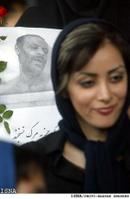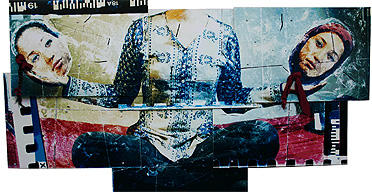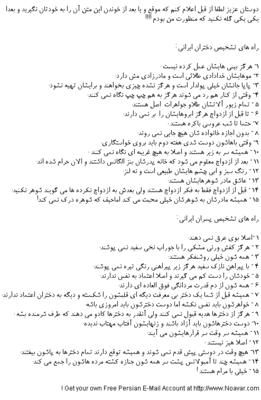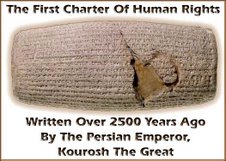


Discover the wealth, power and enduring legacy of Ancient Persia. With unprecedented loans from the National Museum of Iran, the Persepolis Museum and the Louvre, and a season of special events including films, music, guest lectures and workshops.
Exhibition dates
9 September 2005 – 8 January 2006 10.00 – 17.30 daily (last admission 16.45)Thursday & Friday 10.00 – 20.30 (last admission 19.45)
Times Online: September 09, 2005 Times2
Michael Binyon at the British Museum,
AS Tamburlaine asked, is it not passing brave to be a King and ride in triumph through Persepolis? Had Marlowe seen for himself the glories of that fabled capital, he could, perhaps, have dwelt further on the riches of ancient Persia: the vast bas-reliefs of warriors and horsemen ornamenting the palaces and staircases, the elaborate stone pillars, lions of lapis lazuli (pictured), gold and silver drinking bowls, reliefs depicting the procession of subjects — delegates of an empire that stretched from India to Libya — bearing gifts to King Darius, and exquisite bracelets, torcs and gilded amphora handles in the form of a winged ibex.At its height, the empire created by Cyrus and ruled in subsequent splendour by Darius and Xerxes covered most of the known world. It reached a level of sophistication, artistry and innovation barely equalled by Rome almost a millennium later: the first postal system, a global currency, a tax and communications system, a canal linking the Nile and the Red Sea, a federal administration that relied on local governors known as satraps, religious tolerance and, above all, equine prowess and mastery.How much of all this do we, the distant beneficiaries, now remember? Alas, very little. The Persian empire lasted a mere two centuries, from 550-330BC. It ended in catastrophe, when Alexander of Macedon burnt Persepolis and smashed the imperial system.And, thanks to Thermopylae, Marathon and Thucydides, we have seen the titanic struggle between Persians and Greeks only through the eyes of Persia’s enemy. But even a century ago more was known of this ancient realm than now: the British Museum, from earliest days, began amassing relics, bracelets and jewellery from the far-flung provinces once ruled by Persia. Many came from a huge cache found in the 19th century, known as the “Oxus Treasure”.Now, augmented by holdings from the Louvre and an unpredented loan from Iran, it has put these treasures together in a magnificent new exhibition: Forgotten Empire: The World of Ancient Persia.The sweep of glory is there, including much that has never been outside Iran or even on public display before. There are painted tiles and artefacts from the palaces, as well as delicate vessels and objects from the royal dining tables. One room displays the workings of the postal system on the long road from Susa to Sardis. There are clay tablets with details of ancient divorce settlements or messages from Jewish soldiers serving in the army. A wonderful mastiff stands guard with a patina of polished stone as gleaming now as 2,500 years ago. The luxury in life and death as well as the influence and objects from Greece are shown, and, famously, the world’s first declaration of human rights: the iconic Cyrus Cylinder, which records his decree allowing the Jews to return home from Babylonian captivity.Four years in planning, the exhibition has overcome political tensions and the uncertainties of Iran’s elections to present one of the finest depictions of an ancient civilisation of which we have seen too little. It is well worth seeing it now.
Financial Times, 2 September 2005 By Peter Aspden, Financial Time’s arts correspondent
In a back room of the British Museum that resembles the floor of a furniture warehouse, large crates are being wheeled in and carefully prised open. They look undistinguished from the outside, like a consignment of bananas headed for the supermarket shelves. But their contents, as is testified by the delicate movements of their handlers, are precious - almost unimaginably so. They hold the 80-odd works that are the centrepiece of the museum’s next show, opening on Friday, called Forgotten Empire: The World of Ancient Persia. John Curtis, the museum’s keeper of the ancient Near East department, invites me to peer inside one of the crates. There is a superb statue of a black dog, sitting on its haunches with a sphinx-like sense of dignified calm. “It is a very impressive piece, slightly larger than life-size, found in Persepolis,” says Curtis. He looks as if he would like to stroke the dog on its shiny head, but museum practice would force him to put on a pair of plastic gloves to handle the piece. And besides, there are other treasures to admire.Curtis does not give the impression of easy excitability, but there is no mistaking his pleasure as he gives me a quick guided tour of the pieces that have already been unpacked: a silver plate found buried in the palace of Persepolis, inscribed by Darius I, one of the great rulers of Persia’s Achaemenid period, from 600BC to 400BC; a Greek statue of Penelope, booty from one of the many wars with the old enemy; some exquisitely crafted jewellery. The pieces have arrived from Tehran, where most are housed in the city’s National Museum. But Curtis’s relief at their safe passage has an added level of satisfaction; for until they arrived just three days ago, there were grave doubts that they would be able to take their place in the exhibition at all.Curtis explains how the works nearly became an early victim of the surprise election in June of Iran’s new president, Mahmoud Ahmadi-Nejad, the former mayor of Tehran. The pieces, which will take pride of place in the museum’s galleries for four months, were all packed and ready to leave - until Ahmadi-Nejad’s victory. After the election there was, in Curtis’s words, “an entirely understandable reluctance” on behalf of the officials who had arranged the loan to take the final decision to send them on their way. Cultural co-operation can be too easily seen as unseemly political compliance. “It was decided to take the decision to the Council of Ministers, following a flurry of comment in the Iranian press on the wisdom of exporting such iconical pieces, given the risks involved,” says Curtis. The council, chaired by the outgoing president Mohammad Khatami, gave the go-ahead at its meeting on July 24. The pieces were in London within a week.I ask him how anxious he’d been that the promised loan would be revoked at the last minute. “Very worried. It would have had a big impact on the exhibition.” Was it a concern that Ahmadi-Nejad’s election had prompted such a failure of nerve? Curtis, who has been dealing with Middle Eastern governments and the strictures of political compromise for most of his academic life, gives a classic diplomatic answer which he all but reads off an autocue: “I think it is premature to start speculating on the attitude of the new government towards culture and cultural heritage.”But western diplomats will surely have noted the events of the past weeks, including their intriguing denouement: modern Iran has decided that ancient Persia will have its moment in Bloomsbury. But what, precisely, is the significance of that?The exhibition’s title, Forgotten Empire, represents the feeling Curtis has had throughout his career that of all the great empires of antiquity - Assyrian, Babylonian, Greek, Roman - the Persian empire is perhaps the least known. “It was the largest empire the world had known, about the size of the Roman empire, depending on how you look at it. It lasted about 200 years and played a substantial role as a bridge in transmitting the contributions of Assyria and Babylon to the west, via Greece.”It is surprising that it is not much better known. It is partly due to the Greeks,” he says. “They were not complimentary about the Persians because they were fighting against them. Persia is represented as a hotbed of tyranny and despotism, as an opponent of freedom and democracy. It is a completely wrong interpretation, but one that has become quite widespread over the years, and because of that people haven’t fallen in love with Persia.” Curtis, it is plain to see, is head over heels.Evidence shows the Persian empire to have been a tolerant one. “We think the Achaemenid kings were Zoroastrians, but it wasn’t a state religion. Archives describe the worship of other gods and when kings travelled abroad they paid lip service to local gods. It was clear that local religions were allowed to flourish.”In the British Museum’s own collection, the Cyrus Cylinder, a baked clay charter inscribed by Achaemenid ruler Cyrus after he had captured Babylon, describes how he returned statues of the gods to shrines from which they had been removed, and how he allowed deported peoples to return home. (The return of the Jews to Jerusalem is also described in the Bible.)Nor should the Persians be regarded as excessively bellicose, despite the notoriety of the Greco-Persian wars under Darius and Xerxes. The former’s incursion into Greece was prompted by unwelcome Greek interference in Asia Minor. “The Persians never entertained serious thoughts of holding and annexing mainland Greece. It would have been a bridge too far,” says Curtis. “The sole purpose of the exercise was punitive.” Yet the spin of Greek historians, from Herodotus onwards, ensured that it was the heroic rearguard action at Marathon that captured the public imagination, to the extent that it is still celebrated in every major athletics championship.For the late Edward Said, in his highly influential essay “Orientalism”, the depiction of Persia in the tragedies of Aeschylus was nothing less than the beginning of the west’s wilful misunderstanding of the east, which he believed played such a crucial historical role in present-day conflicts. When I talk to Neil MacGregor, the British Museum’s director, about the exhibition, he concurs. “The Greeks helped create the division between Europe and Asia, those stereotypes of the freedom-loving, tough European versus the servile, luxurious, effeminate, despotic Asian. We have gone on living with those stereotypes in an extraordinary way, because of the way Greek literature was absorbed into the mainstream.”Many of the exhibits will surprise visitors. First, the “astonishing” quality of the works, says MacGregor; and then the sheer scale of the empire, which stretched from Egypt and Greece to China and India. “People still have it in their heads that these are the people that the Greeks defeated. It is like thinking of the British empire as those people whom the Boers defeated.”And then, he says, it is the way in which Persia worked out how to rule over its empire. “It was a multinational organism, and it is very fascinating to see how quickly the issues that any multinational organism has to deal with are identified. They showed that you can leave alone and foster local religions and habits, and all you really need [to be centrally controlled] are communications, the law and military security. The rest can be devolved.”The themes of religious tolerance and civil liberties have extraordinary resonance today. “Absolutely,” says MacGregor. “And the issues raised by the Persian empire are still very relevant. Just as Gibbon [when he wrote about the fall of the Roman Empire] was writing as much about 18th-century politics, the same applies today. What this exhibition says about religion and diversity are worth thinking about.”The glories of Achaemenid Persia in effect came to an end when Alexander the Great crossed the Hellespont in 334BC and defeated the armies of Darius III in 331BC, battles vividly commemorated in a famous mosaic at Pompeii. Alexander marched into Persia and committed, as Curtis describes it, “a supreme act of vandalism” when he entered Persepolis and put the city’s magnificent buildings to the torch. “Whether it was an act of drunken folly or revenge for Xerxes’ destruction of the acropolis at Athens, it was surprising behaviour from one who prided himself on being a pupil of Aristotle,” he writes with palpable sadness in his British Museum book on ancient Persia.On a sunny spring day in Tehran, the topic of Alexander crops up again as I chat to Shahrokh Razmjou, head of the Achaemenid department of the Iranian capital’s National Museum. The burning of Persepolis is embedded deep in the national consciousness, he says, and quotes from a recent popular song, which says that “even the fires of Alexander could not destroy us”. He tells me how much Iranians hated Oliver Stone’s recent movie Alexander for its neglect of his crimes against Persia. I say that the Greeks hated it too, ironically, for its depiction of his homosexuality. “I think the only one who enjoyed it was George W. Bush,” he replies, quick as a flash.Razmjou too is puzzled that the Persian Empire seems to be all but forgotten, “compared to the Egyptomania that struck the world, with all those movies about mummies”. He too blames the Greeks, specifically the morally simplistic world described by Herodotus, who engendered hostile feelings against the Persians in his writing. “Before him, in Homer for instance, there were heroes and villains on both sides.” Greek writers, keenly promoted by 19th-century historians seeking to justify their nations’ colonial attitudes, made the struggle between Greece and Persia - west and east - a centrepiece of their accounts. “Nobody ever mentions the constructive cultural exchanges,” says Razmjou. “After the wars between Greece and Persia, there were good relations between the two, but we never hear about that.” He says the Persian Empire was characterised by tolerance and diversity, “a good role model for how governments can put different religions next to each other”.Razmjou says he detects a growing interest in Iran itself in the country’s pre-Islamic heritage, particularly among younger people, as the evidence of growing visitor numbers at the museum and sites such as Persepolis shows. Tourism, both within the country and from outside, has also been on the increase. A recent documentary film on the famous statue of Darius I was a popular success, and won a prize at the Tehran film festival. (A request by the British Museum to borrow the statue for its exhibition was one of only three that were turned down, for its iconic importance.) The people of Iran, he says, “still feel the continuation of our culture, right from the Achaemenid period to the present day”.This sense of easy continuity contrasts with the early days of the Iranian revolution of 1979, which emphasised the country’s Islamic cultural achievements, for obvious reasons. Ancient Persian sites and museums were scarcely visited. Rumours abounded that some religious fanatics wanted to destroy some of the monuments in Persepolis. John Curtis rebuts these rumours. “It was never in any danger at all. [All the sites] have been very well looked after and tended throughout.” I ask him if he has noticed a change in the Iranian government’s attitude in recent years. “Not a change - that is too dramatic a way of putting it. But there is now a very obvious and tangible interest in the pre-Islamic past.”Neil MacGregor also talks of the Iranian “awkwardness as to how to fit [ancient Persia] into the national story”, but emphasises that its monuments have been “very carefully preserved, studied and researched”. But he points to another reason for the Islamic regime’s early diffidence: the way that the symbols of ancient Persia were appropriated by the Pahlavi dynasty, which ruled Iran for most of the 20th century, and in particular by Mohammad Reza Shah, the ruler who was deposed by the 1979 revolution.The last Shah of Iran (as the country became known in 1935) was arguably obsessed with his association with the glories of Persia’s ancient past. The culmination of the obsession came in October 1971, when he decided to commemorate the 2,500th anniversary of the Persian monarchy (the precise timing of the date was highly spurious) in an absurdly extravagant style, at a specially constructed tent-city inside Persepolis. Some 60 heads of state or their representatives, including Prince Philip (the Queen was advised against attending by the Foreign Office, which correctly feared an “undignified and insecure” ceremony) gathered at the ancient site. The seating plan pointedly followed 19th-century protocol, seating monarchs ahead of republican leaders, prompting the refusal of French president Georges Pompidou to attend at all.The festivities began with a ceremony that was solemn and ludicrous: the Shah standing in front of the highly evocative tomb of Cyrus the Great at Pasargadae, and delivering a eulogy: “Cyrus, great king, king of kings, Achaemenian king, king of the land of Iran, from me, king of kings of Iran and from my nation, I send greetings... Cyrus, we have gathered here today at your eternal tomb to tell you: sleep in peace because we are awake and we will always be awake to look after our proud inheritance.”Reports of the ceremony’s lavish banquet attracted inevitable criticism: a staff of 159 chefs, bakers and waiters was flown in from Paris to serve the guests roast peacock stuffed with foie gras, crayfish mousse, roast lamb with truffles, quail eggs stuffed with Iranian caviar. A son et lumiere show bathed the columns of Persepolis in white light, which gradually turned red to depict Alexander’s sacking of the city. Time magazine estimated the total cost of the celebrations to be $100m, a figure contested by the Shah. But there is little doubt that the episode damaged him. The most significant criticism came from the exiled Ayatollah Khomeini, who used the occasion to declare his opposition to the monarchy as a whole, a more extreme stance than he had hitherto assumed. “The title of king of kings, which is borne by the monarchs of Iran, is the most hated of all titles in the sight of God,” he said, declaring the festival to be “un-Islamic”. That particular accusation did not have the resonance in the early 1970s that it was to acquire later in the decade. In the end, it was the Shah’s identification with the west - the “Westoxication” of Iran, as the Marxist critic Jalal Ale Ahmad put it - that prompted the revolution of 1979, rather than his PR-driven dalliance with the Achaemenid kings. But the clumsy association of the Pahlavis with ancient Persia was one further reason for the new theocratic regime to concentrate on Iran’s Islamic heritage. Cyrus, Darius and Xerxes found themselves in the wilderness, as did the scores of western scholars who were rebuffed as political relations between Iran and the west plummeted.Iran soon found itself embroiled in its war with Iraq, during which time its attitude towards its own cultural heritage occupied an understandably small part of its attentions. But by the 1990s there were signs of movement. It started, recalls MacGregor, about 10 years ago when staff from the National Museum in Tehran began to establish contacts with the British Museum over a joint cataloguing project of Sasanian coins from the 7th century (the British Museum has one of the world’s richest collections). “Establishing that link became a very important thing,” says MacGregor. “Of course there had been a great deal of British Museum engagement in Iran until 1979, but it became much harder after that. But this was a way in which academic work could go on below the political radar. Officially, relations [between Britain and Iran] were still very chilly, but it was possible to start making these personal contacts.”John Curtis, who had long wanted to hold a major exhibition on Achaemenid Persia in the British Museum, says MacGregor’s appointment as director in 2002 played a key role in bringing this to fruition. “He acted as a catalyst. He was very keen to work with a major Middle Eastern country, which had never been done in this kind of way.” Curtis says that since March 2003, when the idea for the forthcoming show was mooted, the Iranians have been “co-operative, encouraging and enthusiastic” partners. MacGregor travelled to Iran to finalise the loans, and says he “could not have been more warmly received. They wanted to boost tourism, they were keen for more people to come to Iran.” But then politics intervened.Over the past 15 years, under the presidencies of Hashemi Rafsanjani and Mohammad Khatami, Iran had gradually opened up to the west. Most observers expected Rafsanjani to win again in June. But the election of Ahmadi-Nejad, running on a popular anti-corruption programme, instantly prompted “a great nervousness to be seen to be working too energetically with people from Britain”, says MacGregor. “From a strictly parochial view, it could not have happened at a worse time.” Even in the few weeks since the election, Iran’s relations with the west have noticeably deteriorated. Work has been restarted on Iran’s uranium enrichment plant in Isfahan, which many in the west take to be a sign that the country is developing a nuclear weapons programme.And then there were the London bombings of July 7. As a complementary show to the main galleries, there had been plans to display modern Iranian posters showing images of martyrs from the Iran-Iraq war, particularly the way in which they had borrowed from ancient iconography. A week after the bombings, MacGregor was uncertain, in light of the events, whether this small exhibition would go ahead; the museum has confirmed its cancellation, concerned that it would seem insensitive.Yet MacGregor reveals how difficult the decision was. The show, he says, would have shown how the regime in Tehran, during the war with Iraq, had “brilliantly managed to pull all these strands of national identity together. Martyrdom is a Shia tradition that has now been taken up by the Sunnis. How have people come to think that that kind of martyrdom is tied to religious and political purpose? It has never been more important for us to have that debate. We have got to try to understand it. It is no good saying they’re all mad.”That sense of the museum engaging with controversial issues is central to MacGregor’s conception of the British Museum. “What this is about is the extent to which this is an Enlightenment institution. The purpose of the Enlightenment museum was to generate a civic outcome. It changed the way people thought about society. It explored questions of religion. That was an absolutely mainstream Enlightenment role. In the 20th century, for some reason I don’t fully understand, most great museums withdrew from that role, and took on a more academic and aesthetic role. And it’s unclear how best to reconnect with those wider issues today.” This week’s exhibition opening was due to be attended by very senior figures from the Iranian government but MacGregor is not sure now if that will still happen.Culture bringing people together again, under the political radar. Could it be that the most important diplomatic encounter of the coming week takes place in a quiet corner of Bloomsbury, next to a 2,500-year- old statue of a black dog, testimony to a great period in history, sitting in silent witness to our fledgling attempts to establish a new one?
The Bible is full of praise for Persia
The Bible is full of praise for Persia (today's much-maligned Iran) and for its rulers.
In the Book of Ezra, God speaks through the proclamations of Cyrus, the king of Persia, who declares, "The Lord God of Heaven hath given me all the kingdoms of the earth, and he has charged me to build him a house in Jerusalem."Cyrus acceded to this divine command, and thus was the Second Temple in Jerusalem built. In other parts of the Old Testament, there is ringing praise of Cyrus as God's "anointed" and the "chosen" ruler, who freed Jews from their Babylonian captivity.The Jewish feast of Purim celebrates the story of how Esther, queen to a Persian king, saved the Jews of the kingdom from annihilation.
But along with the benevolence of Cyrus and the wisdom of Esther, there also lurked on the horizon the evil vizier, Haman of the race of Agog, whose mind and heart were darkened by rancor and hate.Today, there sits in place of Cyrus one who has inherited not the magnanimity of Cyrus, but the malice of Haman: President Mahmoud Ahmadinejad, who openly calls for Israel to be "wiped off the map."Even in the modern history of Iran, the two strands, one lofty and humane, the other base, have continued to thrive side by side. In 1941, as Hitler was beginning to put in motion his murderous "final solution," the Iranian government convinced Nazi "race experts" that Iranian Jews had lived in Iran for 2,500 years, were fully assimilated members of the Persian nation and must be afforded all the rights of Iranian citizens.The Nazis accepted the argument, and the lives of Iranian Jews residing in Europe were saved. Moreover, thousands of European Jews were saved when Iranian diplomats provided them with Iranian passports. And in the years after World War II, the Iranian government and people were exceedingly helpful - according to Israel's first ambassador to Iran - in facilitating the travel of hundreds of Iraqi Jews escaping persecution and heading for what was soon to be Israel.Iran in fact was the first Muslim country to de facto recognize Israel and established close ties that lasted till 1979.
But even then, the dread spirit of Haman was also in the air. As the Iranian government and many of its people were involved in helping Jews in their hour of need, there were also some ayatollahs who delivered fiery speeches against Jews, and against Israel. Clerical support for the oppression of Jews, which often hid its ugly head behind slogans against Zionism, began to emerge at the time.When Ayatollah Ruhollah Khomeini came to power in 1979, he became the standard-bearer of this tradition. He paid lip service to the idea that Jews would be treated as equals in Iran. Islam, after all, affords Jews many rights as "people of the book." But in fact, Jews were subjected to many cruel and unjust punishments. The first nonmilitary, nongovernmental person sent to the firing squad by the Islamic revolutionary courts was a Jew, Habib Elganian, a prominent Iranian businessman.In this sense, Ahmadinejad's shameful pronouncement about wiping the state of Israel off the map is more than another slip of tongue by a notoriously incompetent, loose-tongued president.
Historically it conjures the spirit of Haman; politically it is the continuation of a policy that does not reflect Iranian history and character but caters to the lunatic fringe of Iranian politics, and of the Muslim world.Ahmadinejad's comments must furthermore be seen in the context of the crisis the Islamic regime faces. For 25 years, the regime's cure for its own glaring incompetence has been to create a crisis. The European Union, particularly Britain, France and Germany, who had been for two decades dependable allies of the regime, has become increasingly estranged over Iran's nuclear adventurism and allegations of its support for terrorists in Iraq. Syria, the regime's only ally in the Middle East, is now politically on the ropes.The domestic crisis is no less serious. The economy is in shambles. The stock market has lost about a third of its total value; the banking sector is all but collapsing; $200 billion dollars of capital has left Iran since the election, and there is increasing acrimony between different factions within the ruling clergy. Ahmadinejad's dangerous rhetoric was meant to energize the "base" and prepare them for the coming battles.
The captive people of Iran, or the millions forced into exile by the regime, must not be held responsible for the sins of the ruling cabal. Instead we must try to find ways to help the Iranian people achieve their hundred-year-old dream of democracy. Only in a genuine democracy can the spirit of Cyrus be truly celebrated and the shadow of Haman expunged.
(
Abbas Milani is director of the Iranian studies program at Stanford University and a co-director of the Iran Democracy Project at the Hoover Institution.)
History The region now called Iran was occupied by the Medes and the Persians in the 1500s B.C., until the Persian king Cyrus the Great overthrew the Medes and became ruler of the Achaemenid (Persian) Empire, which reached from the Indus to the Nile at its zenith in 525 B.C. Persia fell to Alexander in 331–330 B.C. and a succession of other rulers: the Seleucids (312–302 B.C.), the Greek-speaking Parthians (247 B.C.–A.D. 226), the Sasanians (224–c. 640), and the Arab Muslims (in 641). By the mid-800s
Persia had become an international scientific and cultural center.
Geography Iran, a Middle Eastern country south of the Caspian Sea and north of the Persian Gulf, is three times the size of Arizona. It shares borders with Iraq, Turkey, Azerbaijan, Turkmenistan, Armenia, Afghanistan, and Pakistan.
The Elburz Mountains in the north rise to 18,603 ft (5,670 m) at Mount Damavend. From northwest to southeast, the country is crossed by a desert 800 mi (1,287 km) long.
Population (2005 est.): 68,017,860 (growth rate: 0.9%)
Capital and largest city (2003 est.): Teheran, 11,224,800 (metro. area), 7,893,700 (city proper)
Other large cities: Mashad, 2,061,100; Isfahan, 1,378,600; Tabriz, 1,213,400
Climate and whether Iran has vastly varying climates depending on the season, and the part of the country. Iran has a variable climate. In the northwest, winters are cold with heavy snowfall and subfreezing temperatures during December and January. Spring and fall are relatively mild, while summers are dry and hot. In the south, winters are mild and the summers are very hot, having average daily temperatures in July exceeding 38° C. On the Khuzestan plain, summer heat is accompanied by high humidity. In general, Iran has an arid climate in which most of the relatively scant annual precipitation falls from October through April. In most of the country, yearly precipitation averages 25 centimeters or less. The major exceptions are the higher mountain valleys of the Zagros and the Caspian coastal plain, where precipitation averages at least 50 centimeters annually. In the western part of the Caspian, rainfall exceeds 100 centimeters annually and is distributed relatively evenly throughout the year.




























